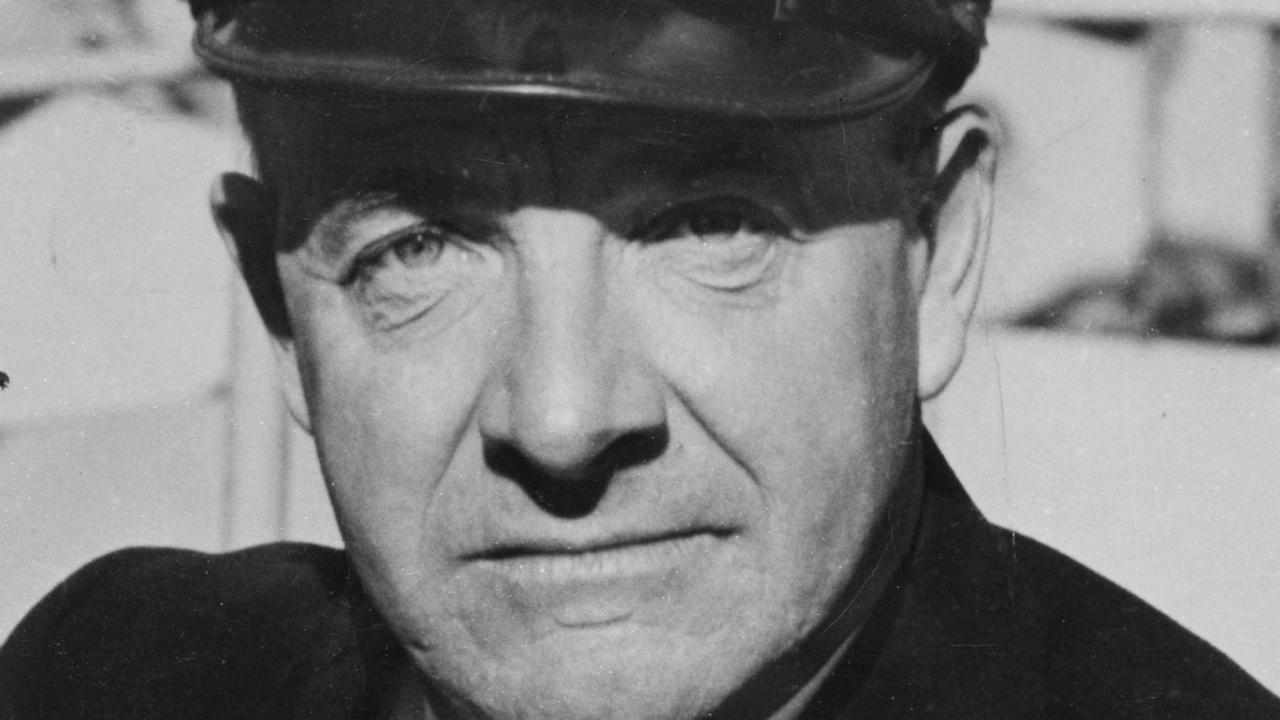When Sydney’s buses went to war
A 1940 double-decker bus painted in camouflage takes pride of place among lovingly restored and buffed vehicles at the Sydney Bus Museum, which opens its enormous new Leichhardt shed tomorrow.

Today in History
Don't miss out on the headlines from Today in History. Followed categories will be added to My News.
AS the World War II “austerity bus” conked out at the top of the hill near North Ryde, an elderly passenger called out: “It used to do this during the war!”
It was the year 2000, and bus 1756 was on a commemorative run along one of its wartime routes.
The man behind the wheel that day was David Wilson, a former NSW Heritage Office employee and a long-term volunteer at the Sydney Bus Museum.
“The (austerity) buses were prone to breaking down on hot days and things like that,” Wilson said.
Bus 1756, which is still registered, will take pride of place among rows and rows of lovingly restored and buffed buses at the museum, which tomorrow holds the grand public opening of its enormous new Leichhardt shed.
Built at Properts in Newtown in 1945, the museum’s austerity bus was a product of wartime rationing and shortages. Normal bus chassis were impossible to find in those days. So the austerity bus rattled along on a Ford truck chassis imported from America, with a timber framework, wooden window frames and a Masonite roof.

It wasn’t the only austerity bus to become well-known on Sydney’s wartime streets. Between 1943 and 1945, the Department of Road Transport and Tramways obtained 61 Ford FCB 194 chassis and fitted them out to take 26 seated passengers and 28 standing. Properts built most of these buses.
Because it was built so close to the end of the war, austerity bus 1756 covered just 44,000 miles before the government sold it in 1948.
Having been a regular sight on routes such as Hurlstone Park to Rookwood, and Ryde to West Ryde, it became a bus for Fairbridge Farm School at Molong in Central Western NSW. It was deregistered in 1963 and was left on a property in the country.
“An old man was going to make it into a caravan and go round Australia, but he never did,” Wilson said.

When the Fairbridge Old Students Association donated the austerity bus to the Sydney Bus Museum in 1990, Wilson and other passionate volunteers researched the bus and worked to refurbish it. It is now a highlight of the inaugural exhibition at the museum’s Leichhardt site. Titled Sydney Buses During World War II, the exhibition features beautifully displayed artefacts including conductors’ bags, tear-off ticket dispensers, petrol bowsers, pamphlets and photographs. Parked next to the austerity bus in the exhibition is another piece of living history — a 1940 AEC Regent double-decker painted in army-style camouflage.
“People had to travel on these at night with all the (full metal) windows closed, and they had to rely on the conductors to tell them where their stops were,” Wilson said.
With mandatory brownouts in place — a night-time precaution against the perceived likelihood of Japanese air raids — the camouflage buses featured solid metal windows instead of glass, and headlamp hoods that aimed a paltry slit of light towards the ground.
“Lumbering down the street in the dead of night they could hardly be seen,” Wilson said. “So they were quite dangerous, but people were basically off the streets at night except for shift workers.

During brownouts everything was pitch black. Special wardens made sure everyone was obeying the brownout.”
Some people scoffed at the brownouts, but the Japanese mini sub attack on Sydney on June 8, 1942 proved that precautions were necessary.
The camouflage bus in the museum’s collection worked out of Randwick and came into the museum’s collection in 1974, more than 10 years before the historic fleet moved into covered premises in Tempe in 1986.
By May 1942, about 100 buses sported camouflage instead of the usual red and cream livery of government buses in those years. The museum’s camouflage bus features painted-out windows, but its original windows would have been metal, Wilson said.
With the difficulty of seeing out of the bus, frustrated passengers got tired of missing their stops, however, and later versions of the metal windows featured a small diamond-shaped hole through which commuters could peer.
Government buses were a vital piece of the Sydney wartime landscape. War workers, troops and civilians put extra pressure on the public transport system, as did petrol rationing. In 1945, there were 546 million trips using government buses — up from 375 million in 1939.
Sydney Bus Museum, 25 Derbyshire Rd, Leichhardt; grand opening, August 7, 10am-4pm, sydneybusmuseum.com/grandopening
Originally published as When Sydney’s buses went to war


